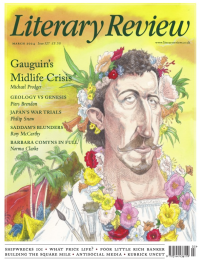Mark Honigsbaum
Journal of the Plague Year
2020: A Reckoning
By Eric Klinenberg
The Bodley Head 464pp £25
In the spring of 2020, New York briefly found itself at the centre of the biggest plague to visit the world in more than a century. The coronavirus ripped through the city’s crowded tower blocks, and hospital emergency rooms were filled with desperately ill patients. Ironically, no neighbourhood was worse affected than Corona in Queens.
By the second week of April, the Covid-19 mortality rate in Corona was 85 per 100,000 residents, more than twice the city average. At Elmhurst Hospital, one of the oldest municipal infirmaries in New York, the morgue was soon overflowing, prompting managers to summon refrigerated trucks to store the bodies. For Linda Dutan, one of several eyewitnesses interviewed by the sociologist Eric Klinenberg in his remarkable new book about the terrible first year of Covid-19, ‘you could hear ambulances coming, like, every hour. It was just one after the other after the other.’
While Dutan’s grandparents and other members of her extended Ecuadorian family hunkered down at her home in Corona, Dutan, an aspiring photographer, decided to document the apocalyptic scenes outside. In Manhattan, shops and restaurants were shuttered and the wide avenues were deserted, but at Corona’s main transport and shopping hub, Dutan found long lines outside the pharmacy and cheque-cashing service. The busiest place of all was the Dominican-run neighbourhood bodega. ‘Everyone talks here,’ explained Dutan. ‘We don’t all know each other, but we know each other’s faces.’
There is little mystery why the mortality rate in Corona was so high. Like other low-income neighbourhoods of New York, Corona is ethnically diverse and its residents are predominantly working class. Together with the adjacent Jackson Heights district, it is the most densely populated area of the city, with more

Sign Up to our newsletter
Receive free articles, highlights from the archive, news, details of prizes, and much more.@Lit_Review
Follow Literary Review on Twitter
Twitter Feed
Under its longest-serving editor, Graydon Carter, Vanity Fair was that rare thing – a New York society magazine that published serious journalism.
@PeterPeteryork looks at what Carter got right.
Peter York - Deluxe Editions
Peter York: Deluxe Editions - When the Going Was Good: An Editor’s Adventures During the Last Golden Age of Magazines by Graydon Carter
literaryreview.co.uk
Henry James returned to America in 1904 with three objectives: to see his brother William, to deliver a series of lectures on Balzac, and to gather material for a pair of books about modern America.
Peter Rose follows James out west.
Peter Rose - The Restless Analyst
Peter Rose: The Restless Analyst - Henry James Comes Home: Rediscovering America in the Gilded Age by Peter Brooks...
literaryreview.co.uk
Vladimir Putin served his apprenticeship in the KGB toward the end of the Cold War, a period during which Western societies were infiltrated by so-called 'illegals'.
Piers Brendon examines how the culture of Soviet spycraft shaped his thinking.
Piers Brendon - Tinker, Tailor, Sleeper, Troll
Piers Brendon: Tinker, Tailor, Sleeper, Troll - The Illegals: Russia’s Most Audacious Spies and the Plot to Infiltrate the West by Shaun Walker
literaryreview.co.uk